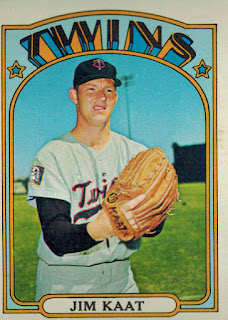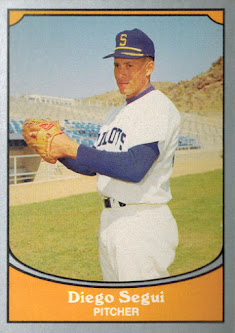The book Electric October came out in 2017, and I think I've seen at least a couple of cardblog posts about it. A friend gifted me a copy for my birthday either last year or maybe the year before, and in our lockdown (or maybe a bit after lockdown was relaxed) I found the time to read it. The book focuses on 6 lives, at it says. What it calls the most exciting World Series, that of 1947, came down to some key moments from some less famous, or not famous at all, baseball folks.
 | 1940 Play Ball Bucky Harris.
|
|
 | Bucky Harris card back.
|
|
It's hard to make the case that the 6 lives are all people who otherwise wouldn't be known for much, as the book tries to make out, since one of them is a Hall-of-Famer. Bucky Harris certainly isn't the most famous Hall-of-Famer, but still people may well have heard of him. He won the World Series twice as manager, bringing the Washington Senators their first title in 1924, and then winning the 1947 series with the Yankees. His Senators also lost the World Series to the Pirates in 1925. I mentioned the other day when I showed my 1940 Play Ball Hans Lobert card that I would be showing another from that set soon, and here it is. This is my third card from the set with one more (Carl Hubbell) on the way. I'm tempted to get more as I think it's a beautiful set, but it's surely an extremely foolish endeavor to think about getting all of them. I might stop at the four I have.
 | The Wiz Snuffy Stirnweiss.
|
|
 | The Wiz Snuffy Stirnweiss card back.
|
|
Another of the main players was 1945 AL batting champ Snuffy Stirnweiss. According to the book, Stirnweiss had a chip on his shoulder about having won the batting title when many players were doing military service. I chose to represent him with this The Wiz Yankees of the 50s card; I have a couple other of these Wiz cards, both of John Candelaria (for his time with the Mets and with the Yankees in the 80s). Stirnweiss died in a tragic train accident in the late 50s.
 | 1970 Fleer Laughlin World Series Al Gionfriddo.
|
|
 | Fleer Laughlin card back.
|
|
Another of the players was "little guy" Al Gionfriddo of the Dodgers. He is best known for a catch which may have robbed Joe DiMaggio of a home run in the World Series. Gionfriddo never played in the majors again after that World Series. This is my first Laughlin card, although I do have some later Fleer Laughlin sticker backs (I guess they can be considered cards, but to me they're stickers); it's a welcome addition to my collection.
 | 1960 Topps Cookie Lavagetto.
|
|
 | Cookie Lavagetto card back.
|
|
Another of the prominent figures in the story of the 1947 World Series is Brooklyn player Cookie Lavagetto. Part of the story of the book is how some players are welcome to stay around after their playing days are over while others aren't. Lavagetto was a popular guy and went on to be a big-league manager, shown here with the Senators.
Of the six main characters of the book, I haven't mentioned Yankees pitcher Bill Bevens yet. I didn't find any cards I liked of him (some of the cards had his name misspelled, which I don't like). Bevens is shown as a contrast to Lavagetto in that he would have liked to keep working in baseball but was never offered anything after that 1947 World Series. The final character is Dodgers manager Burt Shotton. I bought a card of him from the Target All-Time Dodgers set, but it's in my COMC shipment that won't be arriving until at least October. I'm happy to get the Target Dodgers represented in my collection.
Overall, while I enjoyed the book I also don't especially recommend it. It's quite well-written and the author makes a good narrative crafted around Harris, Shotton, Lavagetto, Gionfriddo, Stirnweiss, and Bevens, but in the end it's just a story of a World Series between two teams that I don't especially care for. The later Dodger championship teams would be of much more interest to me, and some Yankee losses might be more up my alley. But a story about the Yankees winning yet another World Series can only be made so compelling to me.
Thanks for reading! I'm really on a roll, having made three posts in three days after 4+ months off from blogging.


















































